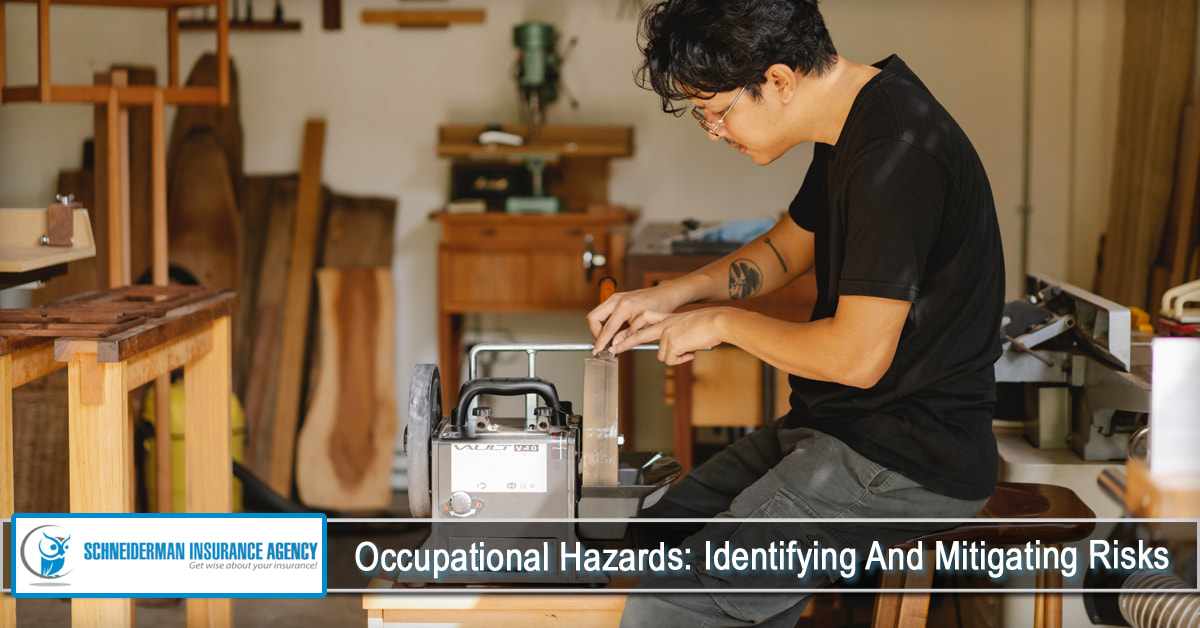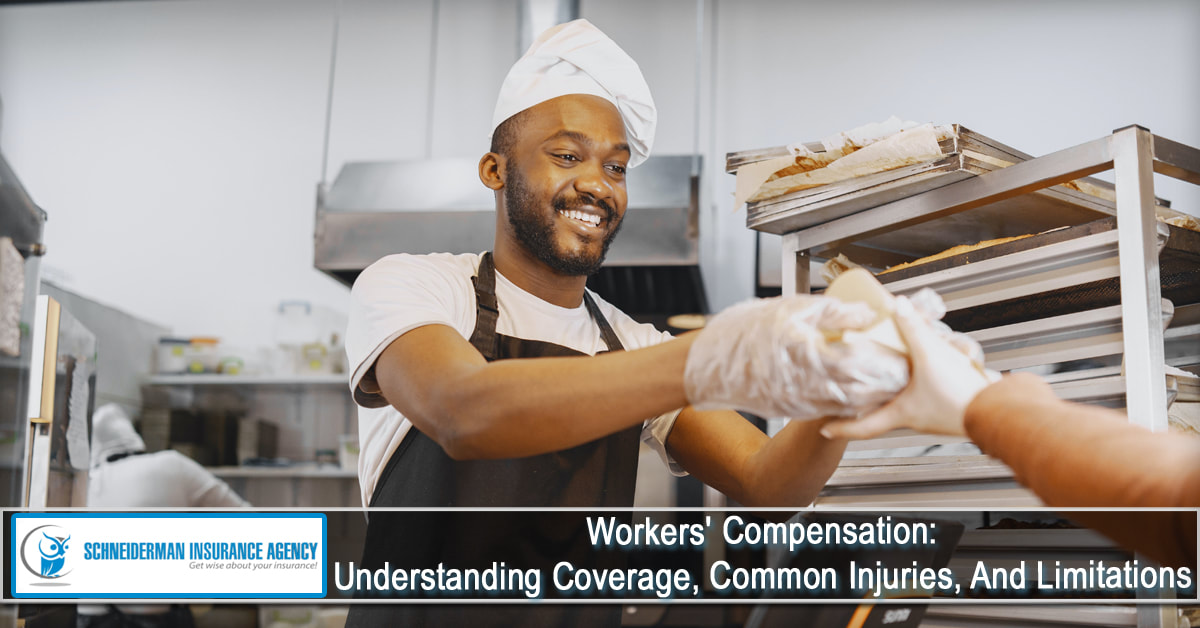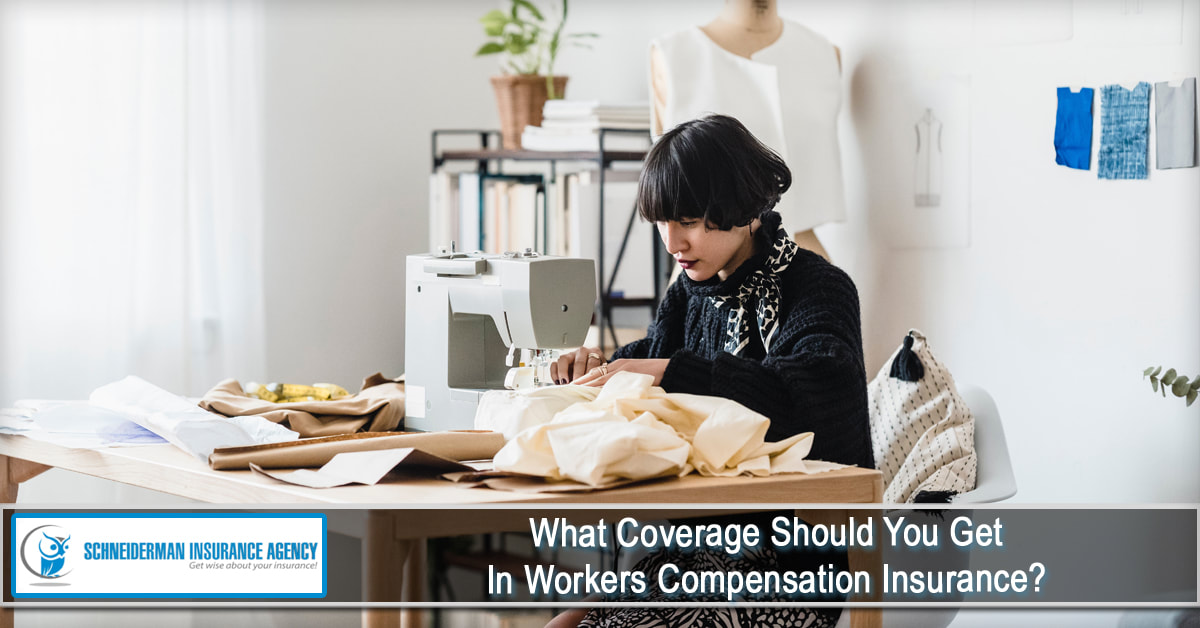Schneiderman Insurance Agency, Inc. Blog
|
|
Owning or managing a gym or fitness center comes with unique risks that require comprehensive insurance coverage to protect your business, employees, and clients. From liability concerns to property damage, having the right insurance policies in place is essential for safeguarding your investment and ensuring financial security. Here’s a detailed guide to understanding insurance options tailored for gym and fitness centers:
0 Comments
In every workplace, there are inherent risks and hazards that can jeopardize the health and safety of employees. From slips and falls to exposure to hazardous materials, employers must be vigilant in identifying and mitigating workplace hazards to protect their workers from harm. In this blog, we'll explore common occupational hazards found in various industries, discuss strategies for identifying and mitigating risks, and emphasize the importance of prioritizing workplace safety.
Repetitive motion injuries are a common occupational hazard faced by workers in various industries, from office workers performing computer tasks to factory workers operating machinery. These injuries, also known as repetitive strain injuries (RSIs) or musculoskeletal disorders (MSDs), can result from prolonged and repetitive movements, leading to discomfort, pain, and reduced productivity. Workers' compensation insurance plays a crucial role in providing financial protection and support to employees who suffer from repetitive motion injuries in the workplace. In this article, we'll explore the importance of workers' compensation insurance for addressing repetitive motion injuries, how it works, and the benefits it provides to both employers and employees.
When employees sustain injuries while performing their duties, employers have a responsibility to provide compensation for their injuries. Workplace accidents can have a profound impact on employees, potentially leading to partial or permanent disabilities and causing them to take time off work, resulting in income loss. Workers' compensation insurance plays a critical role in helping injured employees by covering their medical expenses. However, it's essential to understand that not all injuries qualify for workers' compensation coverage. This article aims to clarify what worker's compensation can cover, outline common injuries, and explain its limitations.
Accidents can happen unexpectedly, even in the workplace. If you've been injured while on the job, it's crucial to understand the intricacies of workers' compensation. This insurance provides essential benefits such as wage replacement and medical coverage to employees injured at work. In this article, we'll explore the common types of workers' compensation claims and provide guidance on navigating them effectively.
Workers' compensation insurance serves as a crucial safety net for both employees and employers, offering protection and support in the event of work-related injuries or illnesses. This insurance policy is not one-size-fits-all; rather, it offers flexibility to accommodate the diverse needs of various professions and industries. In this article, we'll explore the key aspects of workers' compensation coverage to help you understand what to consider when choosing the ideal insurance for your line of work.
Workers' compensation insurance is a vital safety net for both employees and employers, designed to provide coverage in the unfortunate event of work-related injuries or illnesses. Unlike other types of insurance, workers' compensation doesn't require proving negligence to claim its benefits. However, there are exceptions to this rule, and one such exception is the role of drug testing in workers' compensation claims. In this article, we'll explore the dynamics of drug testing in the context of workers' compensation insurance in Granada Hills, CA.
In recent years, more and more employers have been hiring freelancers and independent contractors. With the advanced technology available today, freelancers can utilize their specialized services to look for a job. Businesses employ independent contractors to keep costs down, but what happens if a freelancer is injured on the job?
Whether a worker is a regular employee or an independent contractor, their workers’ compensation cases are frequently disputed to learn about freelancers’ compensation insurance. It may be difficult to determine the "appropriate" remuneration. Finance is indeed hard, and there are a lot of variables to consider when deciding on fair and competitive pay scales.
Workers' compensation is a government-mandated system. This insurance policy is aimed to pay workers who become injured or disabled while still employed by a company.
This article will help you understand the importance of this insurance policy and why you need it. |
Contact Us(818) 322-4744 Archives
July 2024
Categories
All
|











 RSS Feed
RSS Feed